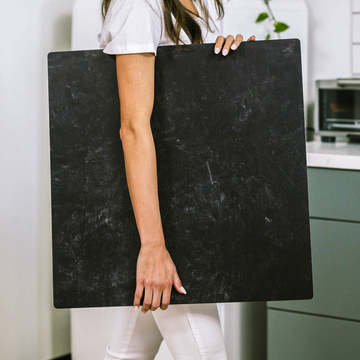We’ve all seen them-a perfect slice of marble, that Insta-famous subway tile, or a rustic wood plank, doing its best to pass for a dreamy kitchen counter. If you’ve ever styled and shot a food or product photo at home, you know the temptation: grab a backdrop, plop down your goods, and hope for magic. But why do some images instantly feel inviting and real, while others fall flat despite using beautiful surfaces?
As it turns out, the answer goes much deeper than picking a “nice” backdrop. There’s an often-overlooked science behind truly convincing kitchen photography, and understanding it can give your product shots the realism and atmosphere that sets them apart from the rest.
Why “Good Looking” Isn’t Good Enough: The Power of Contextual Color
Let’s start with a common photography frustration. You buy a gorgeous marble-printed board, pair it with a beautiful mug or handmade loaf, but somehow, the shot still looks… off. That’s because most backdrops are created to look right on their own, not in context with your lighting or props.
In real kitchens, surfaces are constantly shaped by their environment. Light bounces off your cabinets, appliances gleam hints of blue or stainless steel, and even a nearby basil plant can subtly influence how your “white” countertop appears to the camera.
- Chromatic adaptation: Eyes and cameras interpret color in context. A neutral surface in the showroom may take on unexpected undertones at home.
- Reflected light: Countertops pick up and reflect the hues of everything around them, adding authenticity to your photos.
To add depth and realism, choose backdrops with a semi-matte or lightly textured finish. These interact with your lighting and props, helping your kitchen scenes look genuinely lived-in. For even greater consistency, place a neutral card nearby and observe how the backdrop shifts as your gear and lighting setup change.
The Missing Ingredient: Micro-Texture and Light
It’s easy to believe that any high-res print will give you hyper-realistic results. However, without real-world texture, your photos risk seeming sterile or obviously staged. Authentic surfaces-stone, wood, tile-feature tiny imperfections: scratches, dips, and subtle gloss changes that scatter light and create lifelike shadows.
- Set a hard-edged object (like a spoon) on your backdrop and light it from the side.
- Look for detailed, tiny shadows and highlights following the surface texture.
- If those cues are absent, your backdrop may be too flat for true, close-up photorealism.
These micro-details are especially important if you shoot a lot of macro or overhead product images. A backdrop with genuine texture reacts to raking light, giving your photos three-dimensional pop that’s hard to fake in post-processing.
Layers, Angles, and Modular Magic: Building Real-Kitchen Depth
Most kitchen photos live and die on their staging depth. In actual homes, we experience not just a counter, but backsplashes, cabinets, and distant shadows-layers of environment the eye expects to see.
Advanced backdrop systems, such as modular boards that can stand vertically or at various angles, allow you to replicate this real-life layering. This technique brings parallax-the shifting depth between planes-into your photos, selling the illusion of a fully built kitchen rather than a simple tabletop shot.
- Create “zones” by stacking surfaces for a multi-layer look.
- Experiment with angles to mimic counters, islands, and walls.
- Change setups quickly for seasonal, brand, or campaign consistency without a full set rebuild.
Workflow Consistency: The Surprising Edge for Brands and Creators
Here’s a bonus rarely discussed: investing in high-quality, modular, multi-use surfaces isn’t just about a better photo-it streamlines your entire process. Each photo becomes a micro-achievement, delivering both aesthetic appeal and efficient results for every new launch or post.
With a trusted set of adaptive backdrops, you can:
- Deliver a coherent visual story across social media, your website, and e-commerce platforms like Etsy.
- Reuse and recombine boards for limitless kitchen “stories” without looking repetitive.
- Encourage community: share your behind-the-scenes techniques with fellow creators, raising the bar for everyone.
Final Thoughts: Make Your Backdrop Work as Hard as You Do
Next time you step behind the camera, remember: the secret to authentic kitchen photography isn’t just a pretty print. It’s about interaction with light, real touchable texture, smart layering, and visual consistency.
When you choose surfaces engineered for photographers-not just for looks-you empower every image to tell a deeper, richer kitchen story. You’ll see the difference in how your products pop, how your brand feels, and how your community connects.
If you’ve discovered a creative kitchen backdrop trick or want to showcase how your surface elevates your shots, drop a comment below! Every micro-achievement is another step closer to kitchen photography that feels truly at home.

